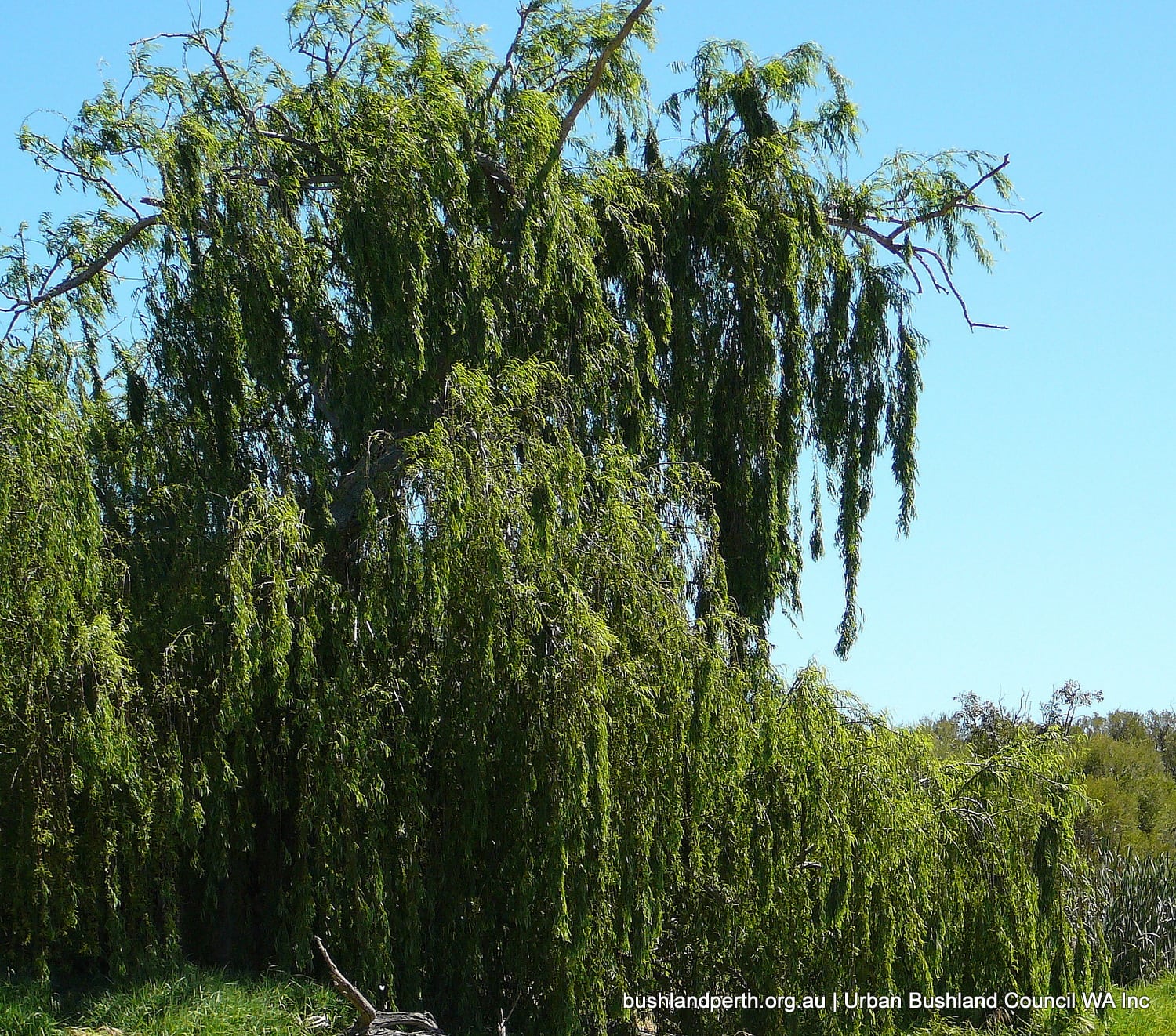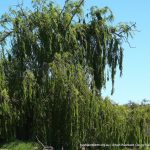Weeping Willow

Common name
Weeping Willow
Scientific Name
Salix babylonica
Type of plant
Tree And Shrub Weeds
About this weed
This tree is a common sight along water courses and in ornamental gardens and parks. Originally from China it was introduced as a parks and garden plant and also planted along rivers to stabilise banks. It grows to a height of 10 metres and is easily identified by its long weeping branches. The tree is a serious weed in the eastern States although not currently listed as a Weed of National Significance (WONS).
Description
Willows are deciduous, weeping trees with a stout trunk, growing to about 10 m high. They always grow near fresh water and can be distinguished by their long slender weeping twigs. In West Australia only female plants have been recorded. They also form hybrids with S. alba and S. fragilis. Flowers are produced in early winter. Reproduction is by seed, vegetative regeneration like resprouting, root suckers or stem layering. The time to first flowering is 4+ years and the seedbank persists for only a short period from days to 1 year. Its response to fire is: green foliage and timber will burn in a hot fire; established trees may be killed; younger trees may resprout.
Impact on Bushland
Willows are serious weeds along rivers and creeklines. It is of concern for its potential to hybridise and spread in natural areas. These trees also increases the likelihood of bank erosion and large scale soil movement over time. They also consume large amounts of water and have massive leaf drop in autumn which can significantly affect water quality.
Location
They are usually found on rivers and creeklines in black peaty sand over clay and are beginning to spread over the Swan Coastal Plain.
Priority for removal
Medium: they can disrupt ecological processes or result in loss of biodiversity.
Management (hand)
Hand pull seedlings. Biological control of six willow species is under consideration in Australia.
Management (herbicide)
Cut and paint or stem inject using 50% Glyphosate throughout the year, however results may be variable in spring. Check restrictions on chemical use near waterways. Follow-up monitoring and control of regrowth from stumps, pieces of stems or seeds may be required for 3 to 5 years after initial control. Read the manufacturers’ labels and material safety data sheets before using herbicides. Optimal treatment months are August to November, but occasional treatment can be done at any time.
Flowering month/s
August, September, October
Flower colour/s
No data
Information source
https://florabase.dpaw.wa.gov.au/browse/profile/20063
Additional information
https://florabase.dpaw.wa.gov.au/weeds/swanweeds/
Hussey, B.M.J., Keighery, G.J., Dodd, J., Lloyd, S.G. and Cousens, R.D. (2007) Western weeds. A guide to the weeds of Western Australia, Second Edition, The Weeds Society of Western Australia, Victoria Park, Western Australia.
https://www.agric.wa.gov.au/pests-weeds-diseases/weeds/weeds-national-significance

